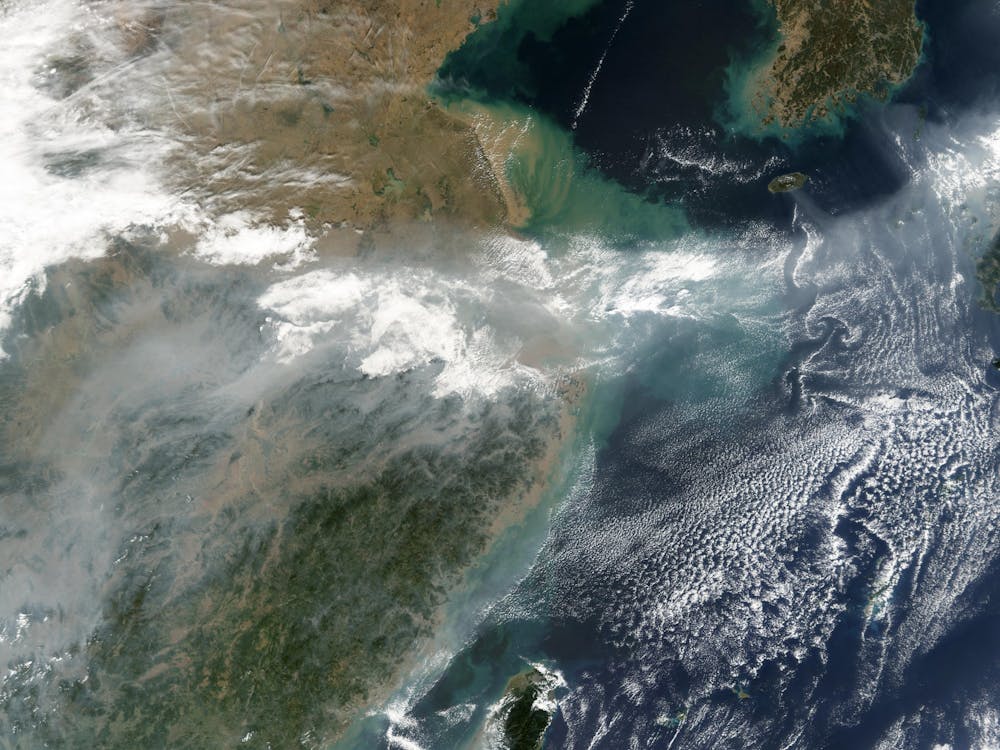Coronavirus (COVID-19) has claimed the lives of over 14,000 people worldwide, infecting a total of 330,000 people. Countries such as China, Italy, France, Spain and the U.S. have suffered the most damage to date. Yet, among heightened anxiety and social distancing measures, the pandemic has at least one beneficiary: the planet.
According to a preliminary paper by researchers at Bocconi University in Milan, air pollutant concentrations decreased significantly across northern Italy and China in the wake of the pandemic. Nitrogen dioxide emissions, which are strongly correlated with activities such as driving and factory production, decreased by up to 30 percent in China. Marco Percoco, an author of the study, explained the unprecedented nature of this phenomenon.
“It’s the first time in history we’ve seen something like this,” Percoco said to the New York Times. “It is clear people are not moving by cars.”
The paper describes the drop in PM2.5 (particulate matter of a size less than 2.5 microns) over the city of Milan. Data from the World Health Organization (WHO) indicates that the drop, 25 μg/m3, could save over one million lives if implemented worldwide.
The numerical data is backed up by anecdotal observation. Viral social media posts show crystal-clear water in Venetian canals, free from the pollution drivers inadvertently push into the rivers.
China has seen similar results. According to Lauri Myllyvirta, an analyst at the Center for Research on Energy and Clean Air, China’s carbon dioxide emissions over the past three weeks have been about 25 percent lower than during the same period last year.
Even this temporary decrease could be significant for reducing climate change. The 25 percent reduction is equivalent to New York City’s emissions for an entire calendar year, Myllyvirta explained to the New York Times.
Hopkins Professor of Earth and Planetary Sciences Darryn Waugh, whose research focuses on the interactions between the ocean and atmospheric pollution, explained that this reduction was not predicted by atmospheric data.
“To be honest, I didn’t really have this sort of unexpected drop in my climate models,” Waugh explained in an interview with The News-Letter. “I think people will definitely be trying to put these changes in their models and project the effect that it might have on the atmosphere.”
He was particularly interested in the data indicating that Chinese nitrogen dioxide emissions decreased.
“Nitrogen dioxide reacts with oxygen in the lower atmosphere to form ozone, which has a much longer chemical lifespan. That ozone is damaging to the lungs, so hopefully we’ll see a reduction in deaths caused by poor air quality,” Waugh said.
Waugh noted that data from the WHO indicates that the majority of these deaths occur in less developed countries.
Melanie Alfonzo, a sophomore who is affiliated with both Students for Environmental Action and GreenHacks, explained in an interview with The News-Letter what the reduction of pollution represents.
“This really shows the extent and control that human society has on the environment,” Alfonzo said. “Hopefully now people can see that a compromise can be made between lowering emissions and getting things done.”
With the accelerating rate of infections in the U.S., it is likely that more states will enact shelter-in-place orders. According to CNN, approximately one half of the country will be under lockdown orders by the time this article is published. Such orders would have the immediate impact of drastically cutting U.S. air pollution.
However, celebrations may be somewhat premature. With the recent news that China may soon lift Wuhan from lockdown, emissions could skyrocket past even last year’s levels. According to the New York Times, China’s carbon dioxide emissions surpassed that of the U.S. and Europe combined in 2018. Waugh noted that nitrogen dioxide emissions in China are beginning to rise.
“I think emissions will rebound to at least the same level that they were before,” Waugh said. “If they open new factories, the levels will only shoot up. They still have to fulfill their economic targets for the year, and their economy has been down for months. The demand for goods might be higher in the second half of the year.”
Another danger, according to Waugh, is the deprioritization of environmental goals.
“During normal times, countries have some self-imposed limits on pollution. But in a situation such as this for China, you have to consider the likelihood that some of those self-imposed limits won’t be prioritized,” he said.
Alfonzo agreed that emission levels will rise to what they were before the pandemic.
“For it to be sustainable, people’s lifestyles should change permanently,” she said.

















